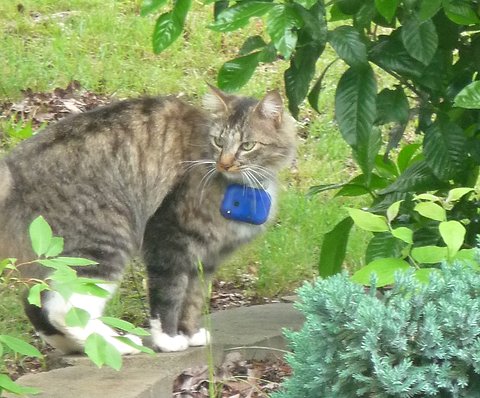The impact of domestic cats on urban wildlife

National Geographic Remote Imaging
Have you ever wondered what kind of mischief a pet cat could get into at Freshkills Park? Given that household cats are non-native predators in the urban environment, one might wonder what impact, if any, the intrepid felines of Staten Island will have on the native wildlife that make their home in the restored habitats of Freshkills Park.
The debate over the impact of domestic cats, both pets and feral, on the wildlife of cities continues, though there have been few scientific studies. So Kerrie Anne Loyd, an ecologist who recently received her doctorate from the University of Georgia, and collaborators recently set out to find out exactly what our feline friends are up to when roaming the neighborhood. The researchers wanted to know how cats are affecting native wildlife like birds and rodents that share the cats’ environment.
The researchers had cat owners in suburbs of Athens, Ga., put small video cameras (redubbed “kitty cams)” around their outdoor cats’ necks. The cameras recorded everything that 60 cats did during the day. At the end of the day, the owners took off the cameras, downloaded the video footage, and recharged the cameras for the next day’s use. Each cat’s outdoor activities were recorded for about a week.
The most surprising thing they found is that the majority of the house cats weren’t hunters, said Dr Loyd. Only 44 percent of the cats in the study stalked, chased or killed other animals during the day.
Among the cats that did hunt, the most popular prey was also surprising. “The birds were a minority of the prey items,” Dr Loyd said. The cats most commonly caught reptiles, something that other studies had missed because the cats either ate the reptiles or left them behind at the kill site.
According to this study, the pickerel frogs of Freshkills Park might be in more danger of lurking cats than birds like the killdeer or American Goldfinch.
Whatever the impact of roaming cats may be, experts agree that the best thing pet owners can do for both wildlife and their pet’s own safety is to keep cats indoors.
“Cats are safer, wildlife is safer and communities are safer when cats are indoors,” said Katie Lisnik, the director of cat protection and policy for the Humane Society of the United States.
She said outdoor cats are in danger of being hit by cars, attacked by other animals or contracting diseases. The most humane way to care for cats, she said, is to keep them inside in a stimulating environment “so that they can express their natural behaviors.”
(via the New York Times)




